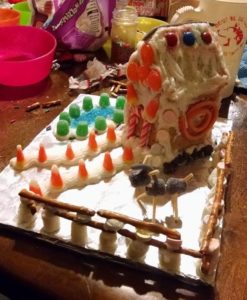Coping Ahead

Emotions are tricky. They seem to take on a life of their own at times, especially when we have to go into situations we know may be (or will be) uncomfortable. For years I “knew” how to handle these situations – I just avoided them. I didn’t go out with friends because being in public places caused me anxiety. I was “sick” a lot because that was so much easier than trying to explain that just walking out my front door caused me to have a panic attack.
I learned it didn’t have to be this way. This didn’t mean I was “cured”, I mean, I know that being in public places and around a lot of people still causes me anxiety. I still have days when I stand at my front door, almost in tears due to the panic I look in the eye. It still happens. I still stay home sometimes, and I am still “sick” sometimes. Yet, on that continuum, the majority of those times now end with me going out even though it is still scary and walking out the front the door even carrying that panic. It is a skill called Coping Ahead and is learned as we work on regulating our emotions. Coping Ahead is a simple 4-step skill that can be applied to almost all situations. Here are the steps and an example how I used it:
1. Identify
Think about the situation and gather your information. What might happen – whether it be realistic or not. How might this make you feel? How might you want to react in this situation? How might you want to react to the feelings?
While at my friend’s home for the holidays, I was asked by her older children to join in making gingerbread houses (think teenagers here) with their friends. This was going to be a lot of people that I didn’t know and a high stimulus environment. I tried to say no, and that didn’t work. I was afraid of having an anxiety/panic attack as I didn’t know their friends and I was older and was I going to fit in. I wanted to participate, but thought better to skip than face the chance of anxiety.
2. Change the Story
For each thing that you identified, tell how you would like for it to happen. How would you like to feel?
I would like to be able to join in, even if there was some apprehension, and just enjoy myself. Just have fun and enjoy the time together. I’d never made gingerbread houses, not even the “adapted” kind they would be making and I just wanted to feel like a little kid and play.
3. Make a Plan
What things can you do to make things result as close to that changed situation as possible? For things that can’t be changed, how can you use your skills in order to participate? How can you achieve these goals honoring your feelings in a non-judgemental way? Is there someone you can share your plan with so you have a buddy?
We would be sitting at the large dining room table and I knew I could sit on the side that had allowed me to have my back against the wall, thus I had a view of all things going on. Everyone would be pretty much sitting in the same places, therefore I sat next to my friend’s two teenagers. Now, although I knew I was safe, this allowed my little anxiety monster to feel safe because I had people on each side of me that I knew. As well, they were aware of my needs and we had a little code word I could use if I need to take a break that would not draw attention to me and yet would allow me to step away if needed.
4. Back-up Plan
It is not a guarantee that your plan will always work, so what will you do as a back-up? Who are the resource persons you can call on? The most important thing, if you find yourself in severe distress, is to stay safe. Breathe…..in for 4 counts…..out for 4 counts.
In my situation, my plan B was actually a part of my plan A. As my friend refilled candy bowls and herded teenagers like a pro, she would smile from here and there, quietly mouthing, “are you ok?” allowing me answer so gently with a nod. I knew I was safe and that was my plan B, I knew I was safe.

